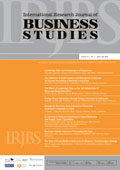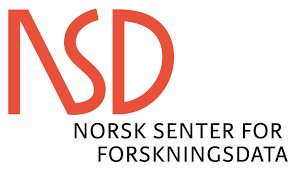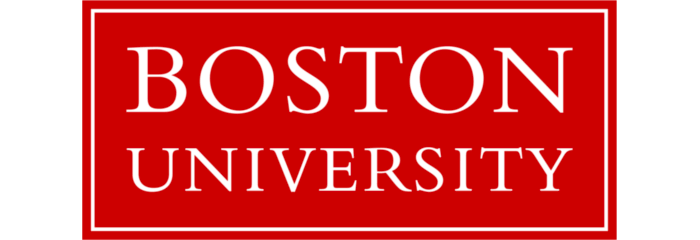Article Metrics |
|
|
Family Ownership Concentration and Debt in Dividends Policies
Abstract
This study aims to examine whether or not family control benefiting the internal and external governance mechanism to mitigate to agency problems affecting dividends in a capital market environment to improve investor protection such as Indonesia. The quantitative analysis model was used to test the hypotheses based on the panel data analysis of 58 family firms listed from 2012 to 2019, and the random effect technique (pooled EGLS). The findings indicate that internal governance mechanism (family ownership and family board representation) are irrelevant to the dividend policy. However, external governance mechanism (debt) negatively affects dividends. This means that debt plays a significant role in influencing dividend policies. In addition, it provides the issue from institutional setting, when legal protection for minority shareholders is improving, the governance role of families become less effective to monitor the firms.
Keywords
Full Text:
References
Adams, R.B., & Ferreira, D. (2009). Women in the boardroom and their impact on governance and performance. Journal of Financial Economics, 94(2), 291–309.
Adjaoud, F., & Ben-Amar, W. (2010). Corporate governance and dividend policy: Shareholders’ protection or expropriation? Journal of Business Finance &Accounting, 37(5–6), 648–667.
Anderson, R.C., & Reeb, D.M. (2003). Founding-family ownership and firm performance: Evidence from the S&P 500. Journal of Finance, 58 (3), 1301-1328.
Anderson, R.C., & Reeb, D.M. (2004). Board composition: Balancing family influence in S&P 500 firms. Administrative Science Quarterly, 49 (2), 209-237.
Anderson R.C., Reeb, D.M., Upadhyay, A., & Zhao, W. (2011). The economics of director heterogeneity. Financial Management 40, 5–38.
Aronoff, C. E., McClure, S. L., & Ward, J. L. (2003). Family business succession: The final test of greatness (No 1), Family Enterprise Publisher.
Attig, N., Boubakri, N., El Ghoul, S., & Guedhami, O. (2016). The global financial crisis, family control, and dividend policy. Financial Management, 45(2), 291–313.
Bertrand, M., & Schoar, A. (2006). The role of family in family firms. The Journal of Economic Perspectives, 20(2), 73–96.
Black, F. (1976). The Dividend Puzzle. The Journal of Portfolio Management, 2 (2): 5–8.
Bøhren, Ø., & Staubo, S., 2016. Mandatory gender balance and board independence. European Financial Management, 22 (1), 3–30.
Campbell, K., & Mínguez-Vera, A. (2008). Gender diversity in the boardroom and firm financial performance. Journal of Business Ethics, 83, 435–451.
Chen, C. R., & Steiner, T. L. (1999). Managerial ownership and agency conflicts: A nonlinear simultaneous equation analysis of managerial ownership, risk taking, debt policy, and dividend policy. The Financial Review, 34(1), 119–136.
Cheung, Y. L., Stouraitis, A., & Wong, A. W. (2005). Ownership concentration and executive compensation in closely held firms: Evidence from Hong Kong. Journal of Empirical Finance, 12(4), 511–532.
Claessens, S., Djankov, S., & Lang, L. H. P. (2000). The separation of ownership and control in East Asian Corporations. Journal of Financial Economics, 58(1-2), 81-112.
Dang, R., Bender, A.F., & Scotto, M.J. (2014). Women on French corporate board of di- rectors: how do they differ from their male counterparts? Journal of Applied Business Research, 30 (2), 489–507.
D’Mello, R., & Miranda, M. (2010). Long-term debt and overinvestment agency problem. Journal of Banking and Finance, 34, 324-335.
De Angelo, H., De Angelo, L., & Skinner, D. (2009). Corporate pay-out policy. Foundation and Trends in Finance, 9, 95–287.
Dong, M., Robinson, C., & Veld, C. (2005). Why individual investors want dividends, Journal of Corporate Finance, 12(1), 121–158.
Faccio, M., Lang, L.H.P., & Young, L. (2001). Dividends and expropriation. American Economic Review, 91(1), 54-78.
Ferreira, D. (2015). Board diversity: should we trust research to inform policy? Corporate Governance International Review, 23 (2), 108–111.
Friend, I., & Lang, L.H.P. (1988). An Empirical Test of the Impact of Managerial Self-Interest on Corporate Capital Structure. The Journal of Finance, 43(2), 271–281.
Gomez-Mejia, L.R., & Larraza-Kintana, M. (2003). The determinants of executive compensation in family controlled public corporation. Academy of Management Journal, 46 (2), 226-37.
Harada, K., & Nguyen, P. (2011). Ownership concentration and dividend policy in Japan. Managerial Finance, 37(4), 362–379.
Isakov, D., & Weisskopf, J. P. (2015). Pay-out policies in founding family firms. Journal of Corporate Finance, 33, 330-344.
Jara-Bertin, M., López-Iturriaga, F. J., & López-de-Foronda, Ó. (2008). The contest to the control in European family firms: How other shareholders affect firm value. Corporate Governance an International Review, 16(3), 146–159.
Jensen, M. C. (1986). Agency costs of free cash flow, corporate finance, and takeovers. The American Economic Review, 76(2), 323–329.
Jensen, M. C., & Meckling, W. H. (1976). Theory of the firm: Managerial behavior, agency cost and ownership structure. Journal of Financial Economics, 4(3), 305-360.
Jensen, G. R., Solberg, D. P., & Zorn, T. S. (1992). Simultaneous determination of insider ownership, debt, and dividend policies. The Journal of Financial and Quantitative Analysis, 27(2), 247–263.
Johnson, S., Boone, P., Breach, A., & Friedman, E. (2000). Corporate governance in the Asian financial crisis. Journal of Financial Economics, 58, 141–186.
Lewellen, K. (2006). Financing decisions when managers are risk averse. Journal of Financial Economics, 82(3), 551–589.
Liu, Y., Wei, Z.B., & Xie, F.X. (2014). Do women directors improve firm performance in China? Journal of Corporate Finance, 28, 169–184.
Maury, B. (2006). Family ownership and firm performance: Empirical evidence from Western European corporations. Journal of Corporate Finance, 12, 321-341.
Miller, D., Breton-Miller, L., & Lester, R. H. (2011). Family and lone founder ownership and strategic behaviour: Social context, identity, and institutional logics. Journal of Management Studies, 48(1), 1–25.
Miller, M. H. & Rock, K. (1985). Dividend policy under asymmetric information, The Journal of Finance, 40(4), 1031–1051.
Pindado, J. Requejo, I. & Torre, C.D.L. (2008). Does family ownership impact positively on firm value? Empirical evidence from Western Europe. IFERA Nyenrode, summer.
Poutziouris, P., Savva, C.P. & Hadjielias, E. (2015). Family involvement and firm performance: Evidence from UK listed firms. Journal of Family Business Strategy, 6, 14-32.
Rajan, R.G. & Zingales, L. (1995). What do we know about capital structure? – Some evidence from international data. Journal of Finance, 50, 1421-1460.
Roida, H.Y. (2020). Family Firms and Capital Structure Decisions: Empirical Evidence from Indonesian Listed Firms. PhD Thesis University of Central Lancashire, School of Business and Enterprise.
Sacristán-Navarro, M., Gómez-Ansón, S., & Cabeza-García, L. (2011). Family Ownership and Control, the Presence of Other Large Shareholders, and Firm Performance: Further Evidence. Family Business Review 24 (1), 71-93.
Setia-Atmaja, L. (2010). Dividend and debt policies of family controlled firms, International Journal of Managerial Finance, 6 (2), 128 - 142.
Setia-Atmaja, L., Tanewski, G.A., & Skully, M. (2009). The role of dividends, debt and board structure in the governance of family controlled firms. Journal of Business Finance and Accounting, 36(7/8), 863-898.
Setiawan, D., Bandi, B., Kee Phua, L., & Trinugroho, I. (2016). Ownership structure and dividend policy in Indonesia. Journal of Asia Business Studies, 10(3), 230–252.
Suveera, G., & Parmjit, K. (2015). Family Involvement in Business and Financial Performance: A Panel Data Analysis. The Journal for Decision Makers, 40 (4), 395- 420.
Teng, C.C., Li, S., & Yang, J. (2020). Family control, external governance mechanisms, and dividend payouts. The Quarterly Review of Economics and Finance. 79 (February), 198–209.
Terjesen, S., Couto, E.B., & Francisco, P.M. (2016). Does the presence of independent and female directors impact firm performance? A multi-country study of board diversity. Journal of Management and Governance, 20(3), 447–483.
Vandemaele, S., & Vancauteren, M. (2015). Nonfinancial goals, governance, and dividend pay-out in private family firms. Journal of Small Business Management, 53(1), 166–182.
Villalonga, B., & Amit, R. (2006). How do family ownership, control and management affect firm value? Journal of Financial Economics, 80(2), 385–417.
Wua, M. Nib, Y., and Huang, P. (2020). Dividend pay outs and family-controlled firms - The effect of culture on business. The Quarterly Review of Economics and Finance, 75, 221–228.
Young, M. N., Peng, M. W., Ahlstrom, D., Bruton, G. D., & Jiang, Y. (2008). Corporate governance in emerging economies: A review of the principal–principal perspective. Journal of Management Studies, 45(1), 196–220.
Copyright (c) 2022 Herlina Yoka Roida, Resty Fauzyah Yahya, N. Agus Sunarjanto
International Research Journal of Business Studies has been covered by the following services: | ||||||||||||||||||||||||
|



















